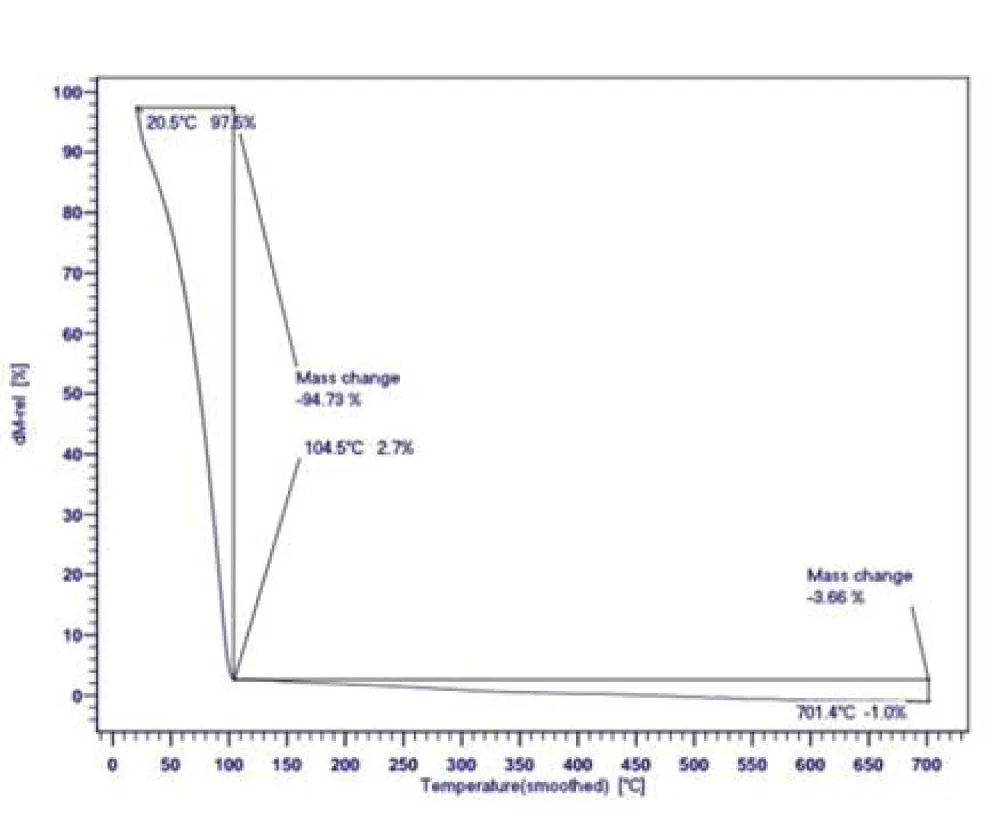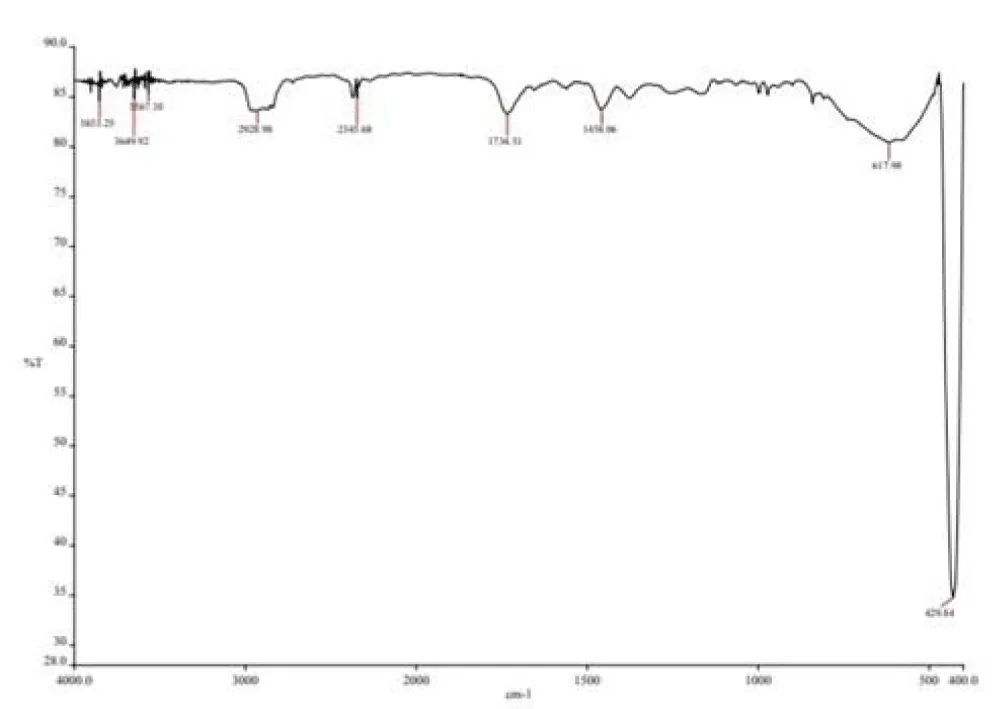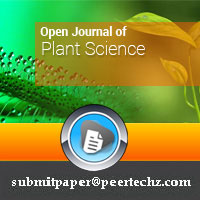Open Journal of Plant Science
Effects of magnesium oxide nanoparticles on phytochemical traits of cumin (Cuminum cyminum L.) plant
Mina Khodayari1*, Seyed Mehdi Razavi2 and Zahra Tishe3
1Mina Khodayari, Department of Biology, University of Mohaghegh Ardabili, Iran
2Seyed Mehdi Razavi, Department of Biology, University of Mohaghegh Ardabili, Iran
3Zahra Tishe, Department of Biology, University of Mohaghegh Ardabili, Iran
Cite this as
Khodayari M, Razavi SM, Tishe Z. Effects of magnesium oxide nanoparticles on phytochemical traits of cumin (Cuminum cyminum L.) plant. Open J Plant Sci. 2025;10(2): 017-020. Available from: 10.17352/ojps.000064Copyright
© 2025 Khodayari M, et al. This is an open-access article distributed under the terms of the Creative Commons Attribution License, which permits unrestricted use, distribution, and reproduction in any medium, provided the original author and source are credited.In recent years, nanoparticles have attracted much attention due to their unique properties in improving various functions in agriculture and plant biology. This study aimed to investigate the effect of magnesium oxide nanoparticles synthesized by a green method using rose extract on growth indices and phytochemical traits of the medicinal plant cumin. Seeds and plants were treated with two concentrations of nanoparticles: (0.01, 0.1 mg/mL). The investigated indices included germination percentage, shoot length, root length, total flavonoids, total anthocyanins, total phenols, and total tannins. The experiment was conducted in a completely randomized design with three replications, and the data were analyzed using analysis of variance and Duncan’s test at the 0.05 level. The results showed that the application of nanoparticles at both concentrations caused a significant increase in all indices compared to the control group. In the 0.1 nano treatment, the germination percentage increased by 33.33%, the root length increased by 130%, and shoot length by 72%. Also, at this concentration, the number of total flavonoids increased by 28.5%, total phenols increased by 36%, and total tannins increased by 25%. Overall, the findings showed that magnesium oxide nanoparticles synthesized by green method may serve as a biocompatible agent to enhance growth and enhancing the bioactive compound content in cumin plants.
Abbreviations
MgO: Magnesium Oxide; PVP: Polyvinyl Polypyrrolidone
Introduction
Cumin (Cuminum cyminum L.) is an annual plant of the Apiaceae family known for its medicinal properties, preventive properties, and unique aroma. It is native to the Mediterranean region and is widely cultivated in these areas, although it is mainly grown in Egypt. Cumin grows and yields optimally in fertile loamy soils in warm and temperate climates. The plant is usually propagated through seedlings and can grow to a height of about 0.5 meters at maturity, producing numerous branches and ramifications. The leaves are dark green and the flowers, which are usually white, turn yellow and wither, producing brown seeds, signaling harvest readiness. Cumin seeds, which are oval in shape and brown in color, have been used in many traditional dishes since ancient times, either whole or powdered. For example, in India, these seeds play an important role in preparing spice blends, soups, and local dishes. While commonly known as a spice, cumin remains a staple in many Asian cuisines. In addition to culinary uses, cumin seeds have high value in traditional medicine and pharmacy. The increasing demand for this plant, along with its limited production, has significantly increased its economic and therapeutic relevance. Farmers face annual losses from pests and diseases, the most common of which is Fusarium wilt. There is also documented evidence of the traditional use of this plant in Ayurvedic medicine in India, where it is used to treat conditions such as indigestion, diarrhea, and digestive disorders ]1[. The oil extracted from Egyptian cumin seeds has been reported to contain 39.2% cuminaldehyde, a compound that is likely responsible for the oil’s potent antifungal properties ]2[. Phytochemicals play an important role in the medicinal and nutritional properties of cumin. Therefore, any changes in the phytochemical properties of this plant can have a significant impact on its quality and efficacy. Magnesium oxide (MgO) nanoparticles are among the nanoparticles that have a high potential to affect plant growth and performance due to their special physical and chemical properties. These nanoparticles can directly or indirectly affect biochemical and phytochemical processes in plants ]3,4[. Based on the limited research available, magnesium oxide nanoparticles have been able to affect the growth and reproductive characteristics of some plants; however, the effect of these nanoparticles on the phytochemical traits of cumin has not yet been fully investigated. This research gap indicates the need for more detailed studies to investigate the effects of magnesium oxide nanoparticles on the phytochemical compounds of this medicinal plant. Therefore, this study was designed and conducted aimed at evaluating the effect of magnesium oxide nanoparticles on the phytochemical compounds of cumin and investigating the potential of these nanoparticles in improving the phytochemical quality of the plant.
Materials and methods
The present study is of an applied type and was designed and implemented with the aim of investigating the effect of magnesium oxide nanoparticles synthesized by a green method on the phytochemical traits of the medicinal plant cumin. In this study, various stages from the synthesis of nanoparticles to the evaluation of phytochemical indices were carried out using standard laboratory methods.
Synthesis of magnesium oxide nanoparticles
2 g of dried rose powder was dissolved in 100 mL of distilled water, heated at 80°C for 40 minutes, and mixed with a 0.1 M solution of magnesium nitrate hexahydrate (10 mL of magnesium nitrate hexahydrate + 90 mL of rose extract). The mixture was stirred for 4 hours at 250 rpm and then left at room temperature for 12 hours. Then the resulting solution was filtered and centrifuged for 20 minutes at 15,000 rpm and the precipitate was separated; the supernatant was filtered to obtain a clear extract and then sonicated. Finally, the resulting extract was dried and the resulting powder was magnesium oxide nanoparticles.
Nanoparticle characterization
The product was prepared in powder form and examined by TGA, FTIR, and DLS analysis (Figures 1-3).
Seed planting and treatment steps
In order to disinfect cumin seeds, they were placed in a 5% NaClO solution for 3 min. Then, suspensions of different treatments of magnesium oxide nanoparticles were prepared by adding certain amounts of magnesium oxide nanoparticles with distilled water. For the germination test, 15 cumin seeds were placed on Whatman filter paper in a Petri dish. Three milliliters of the treatment solution were added to each Petri dish. The samples were kept at room temperature until the end of the test, and in order to compensate for water evaporation, some distilled water was added to the substrate every two days. The greenhouse planting stage included a control group, nano (0.01, 0.1 mg/mL) and was carried out with three replications.
Seeds were sown in a mixture of cocopeat and perlite, in 14- inch pots. The sown seeds germinated after 10 days. The pots were irrigated every other day with distilled water. Until the plant reached a growth stage, the plant was treated with a suspension of magnesium oxide nanoparticles in two concentrations for 2 weeks. The plants were subsequently harvested, and the necessary measurements were conducted.
Evaluation of growth parameters
After the sprouts were observed on the eighth day and the germinated seeds were counted. Ten seedlings were randomly selected from each Petri dish and the length of the radicle and shoot was accurately measured using a millimeter ruler. And their germination percentage was calculated using the following equation:
Gp = (S/T) × 100
Gp: germination percentage (%), S: number of germinated seeds, T: total number of seeds
Measuring phytochemical parameters
Total flavonoids: Total flavonoid content was measured by aluminum chloride colorimetric method. 0.1 g of plant samples were extracted in 10 mL of methanol. Distilled water was added to 0.5 mL of the resulting extract to make a volume of 5 mL. Then, 0.3 mL of 5% NaNO2 was added to the resulting solution and after 5 min, 0.5 mL of 10% AlCl3 was added. Finally, 2 mL of NaOH (1M) and 2 mL of distilled water were added. The absorbance intensity was measured at 510 nm. The sample concentration was obtained using a catechin standard curve. y is the absorbance of the solution and x is the sample concentration ]5[.
y = 0.1267x + 0.7384
Total anthocyanin: To measure the amount of anthocyanins, a 0.5 g sample was thoroughly ground with 10 mL of acidic methanol (a mixture of pure methanol and pure hydrochloric acid in a 99:1 volume ratio) and the resulting extract was poured into test tubes and placed in the dark at 25°C for 24 h. Then, it was centrifuged for 10 min at 1000 rpm and the absorbance of the upper solution was measured at a wavelength of 550 nm. The calculation was made using the formula A= εBC where ε was taken as 33,000 cm/mol; B was the cuvette width of 1 cm and C was the complex concentration in μg. g⁻¹ FW ]6[.
Total phenol: 0.5 g of each sample was dissolved in 10 mL of 96% ethanol. Then 1 mL of 95% ethanol, 0.5 mL of 50% fulin and 1 mL of 5% sodium carbonate were added. The absorbance at 725 nm was measured after one h in the dark. The concentration of total phenolic compounds was calculated from the gallic acid standard curve. y is the absorbance of the solution and x is the concentration of the sample ]7[.
y = 3.1161x + 0.1886
Total tannin: 1 mL of the methanolic extract of the plant was mixed with 100 mg of PVP and kept at 4 °C for 15 min. Then it was centrifuged for 15 min in a refrigerated centrifuge at 3000 rpm. The supernatant was removed and its absorbance was measured at 760 nm. Therefore, to measure the total tannin content, the total phenol content must be subtracted from the total tannin content. The standard curve is the same as the gallic acid standard curve. y is the absorbance of the solution and x is the sample concentration [8].
y = 3.1161x + 0.1886
Statistical analysis
The experiment was conducted in a completely randomized design with 3 replications, and statistical calculations were performed using SPSS software. One-way analysis of variance and comparison of means were performed using Duncan’s test at a probability level of 5%.
Results
Growth and phytochemical parameters
The results showed that the germination percentage, root length and shoot length increased by 33.33%, 130% and 72% in the 0.1 nano group, respectively, and by 23.34%, 69.96% and 27.97% in the 0.01 nano group, respectively, compared to the control group. Also, phytochemical parameters, including total flavonoids, anthocyanins, total phenols and tannins increased by 28.5%, 26.66%, 36% and 25% in the 0.1 mg/mL treatment group and by 16.5%, 13.33%, 20%, and 15% in the 0.01 mg/mL group, respectively compared to the control group. Duncan’s test indicated that the 0.1 mg/mL magnesium oxide nanoparticle treatment had a more significant effect on growth indices than 0.01 magnesium oxide nanoparticles (Table 1).
Discussion
The present study aimed to investigate the effect of magnesium oxide nanoparticles synthesized by a green method using rose extract on the growth and phytochemical characteristics of the medicinal plant Cumin. The findings obtained from the different stages of this research, from the synthesis of nanoparticles to the statistical analysis of data, confirm the effectiveness of magnesium oxide nanoparticles and meaningful role in improving the physiological and phytochemical traits of the plant. The green synthesis method of magnesium oxide nanoparticles using rose extract was successfully implemented as a sustainable and environmentally friendly solution. These findings suggest that the green synthesis method, due to its simplicity and cost-effectiveness, holds strong potential for nanoparticle production with suitable properties. The study of the biological effects of these nanoparticles on the seed germination process and early plant growth showed that the use of magnesium oxide nanoparticles, especially at the 0.1 mg/mL concentration, had a significant effect on increasing the germination percentage, root length, and shoot length. In addition to the growth effects, the results showed that magnesium oxide nanoparticles had a positive effect on increasing the number of phytochemical compounds in the aerial parts of the cumin plant. These compounds included total flavonoids, total phenols, total anthocyanins, and total tannins, which are key contributors to the antioxidant, anti-inflammatory, and medicinal properties of plants. The 0.1 mg/mL nanoparticle treatment resulted in the highest increase in phytochemicals, suggesting that nanoparticle concentration plays a critical role in stimulating the production of these compounds. This effect is likely due to the induction of mild stress induced by the nanoparticles, which stimulated the biosynthesis of secondary metabolites. Therefore, the results of this study indicate the high potential of greenly synthesized magnesium oxide nanoparticles for use in qualitative and quantitative improvement of medicinal plants, especially cumin. Since this plant has wide application in pharmaceutical, food and health industries, improving its phytochemical properties can have a direct impact on increasing the economic and functional value of this product.
Conclusion
From an economic perspective, the production of nanoparticles using available and inexpensive plant materials significantly reduces synthesis costs and has the potential to be implemented on a small and medium-sized farm scale. Therefore, this method can serve as a practical model for local farmers, research-driven enterprises, and herbal product manufacturers, especially in areas with low fertility or magnesium-poor soils. Also, applying a nanoparticle solution to seeds or as a spray to plant aerial parts provides a practical and scalable approach for enhancing crop growth and quality. This may appeal to smart agriculture initiatives, greenhouse cultivation programs, and even herbal medicine production projects under controlled conditions. Finally, this research is a preliminary step towards designing nanotechnology-based agricultural systems. Integrating biocompatible nanoparticles with medicinal plant cultivation offers a new pathway for developing high value-added plant-based products in the country. It is hoped that the findings of this research will lay the foundation for future research and innovation in the fields of sustainable agriculture, biotechnology, and the development of standardized herbal medicinal products.
- Rihawy M, Bakraji E, Odeh A. PIXE and GC–MS investigation for the determination of the chemical composition of Syrian Cuminum cyminum L. Appl Radiat Isot. 2014;86:118–125. Available from: https://doi.org/10.1016/j.apradiso.2014.01.003
- Moawad SA, El-Ghorab AH, Hassan M, Nour-Eldin H, El-Gharabli MM. Chemical and microbiological characterization of Egyptian cultivars for some spices and herbs commonly exported abroad. Food Sci Nutr. 2015;6(7):643. Available from: http://dx.doi.org/10.4236/fns.2015.67068
- Wanner J, Bail S, Jirovetz L, Buchbauer G, Schmidt E, Gochev V, et al. Chemical composition and antimicrobial activity of cumin oil (Cuminum cyminum, Apiaceae). Nat Prod Commun. 2010;5(9):1355–1358. Available from: https://pubmed.ncbi.nlm.nih.gov/20922990/
- Moghadam A. Essential oil of the seeds of Cuminum cyminum L. (Apiaceae). Bull Environ Pharmacol Life Sci. 2015;3:161–163. Available from: https://bepls.com/beplsfeb2015/29.pdf
- Toor RK, Savage GP. Antioxidant activity in different fractions of tomatoes. Food Res Int. 2005;38(5):487–494. Available from: http://dx.doi.org/10.1016/j.foodres.2004.10.016
- Nadernejad N, Ahmadimoghadam A, Hossyinifard J, Poorseyedi S. Study of the rootstock and cultivar effect in PAL activity, production of phenolic and flavonoid compounds on flower, leaf and fruit in pistachio (Pistacia vera L.). Iran J Plant Biol. 2013;5(15):95–110. Available from: https://www.researchgate.net/publication/271909967_Study_of_the_rootstock_and_cultivar_effect_in_PAL_activity_production_of_phenolic_and_flavonoid_compounds_on_flower_leaf_and_fruit_in_Pistachio_Pistacia_vera_L
- Pastrana-Bonilla E, Akoh CC, Sellappan S, Krewer G. Phenolic content and antioxidant capacity of muscadine grapes. J Agric Food Chem. 2003;51(18):5497–5503. Available from: https://doi.org/10.1021/jf030113c
- Mokhtarpour A, Naserian AA, Valizadeh R, Mesgaran MD, Pourmollae F. Extraction of phenolic compounds and tannins from pistachio by-products. Annu Res Rev Biol. 2014;4:1330–1338. Available from: https://citeseerx.ist.psu.edu/document?repid=rep1&type=pdf&doi=ef53c102bb98da37f07487901d1c14e26a3e7637
Article Alerts
Subscribe to our articles alerts and stay tuned.
 This work is licensed under a Creative Commons Attribution 4.0 International License.
This work is licensed under a Creative Commons Attribution 4.0 International License.





 Save to Mendeley
Save to Mendeley
